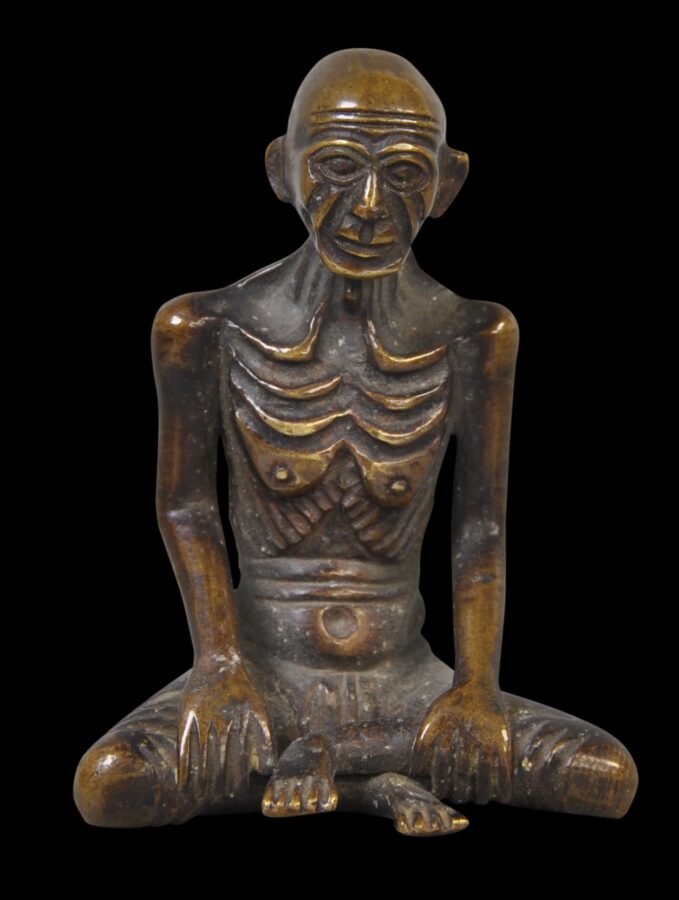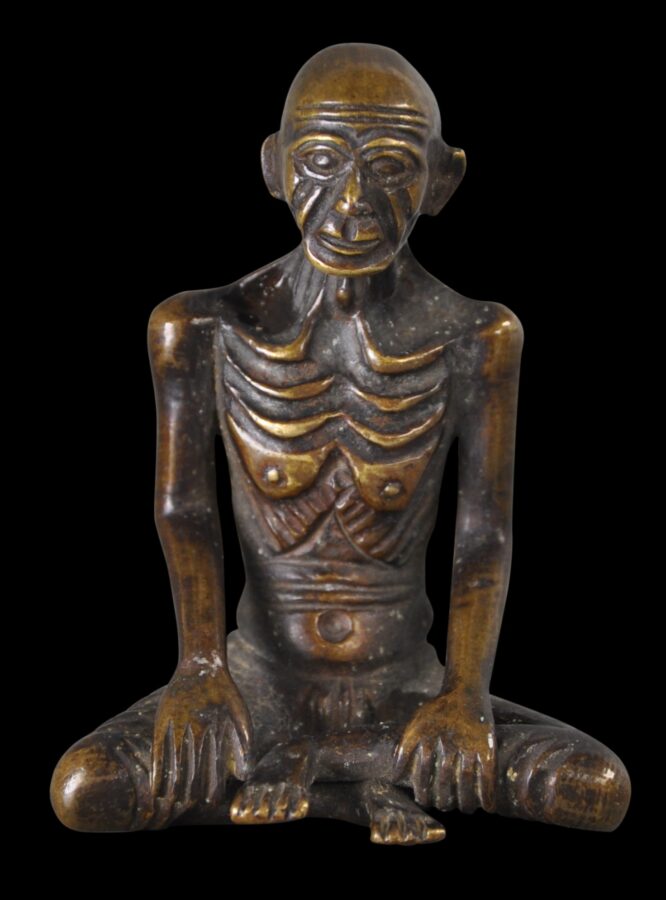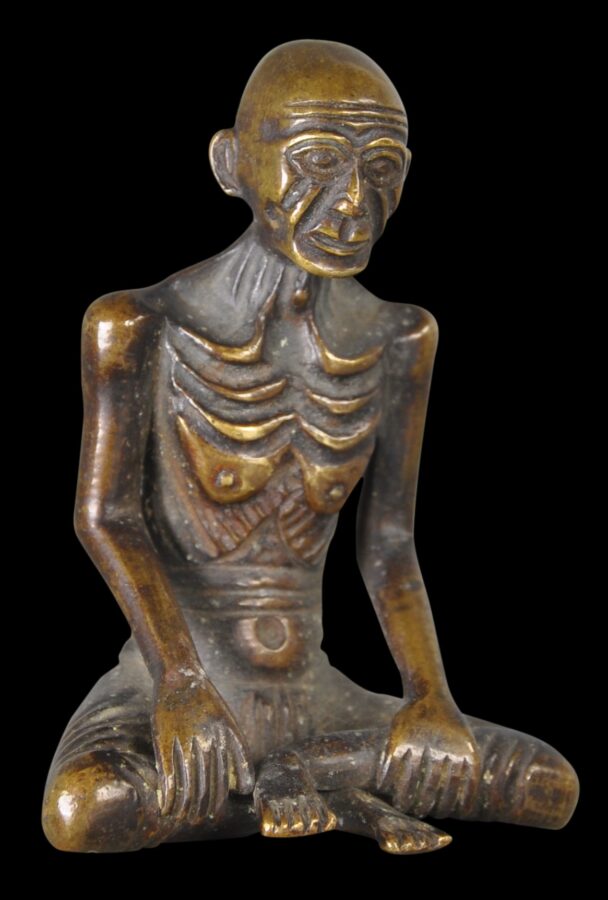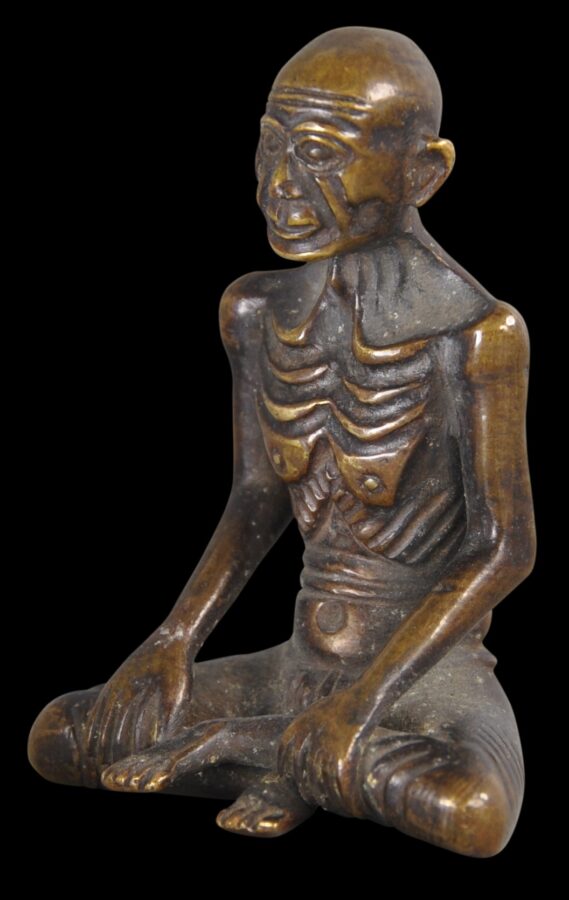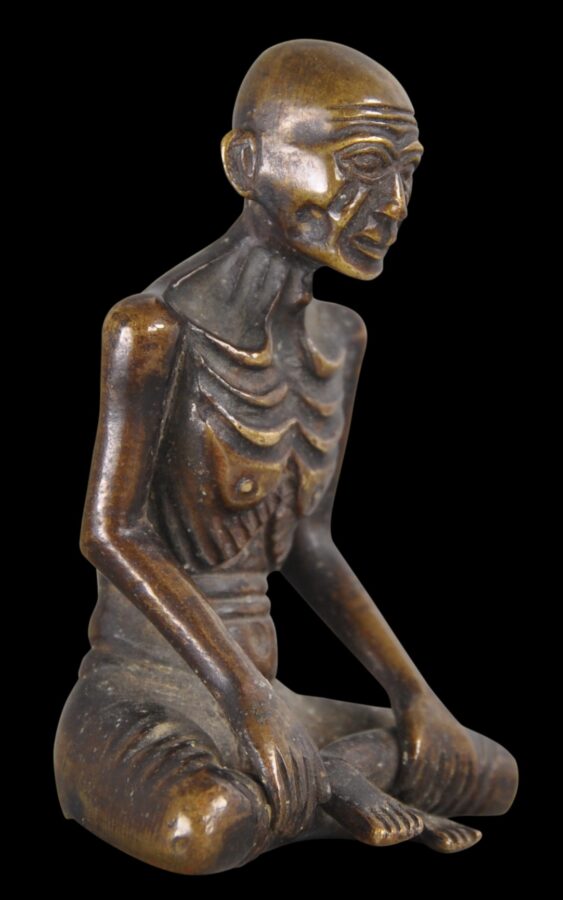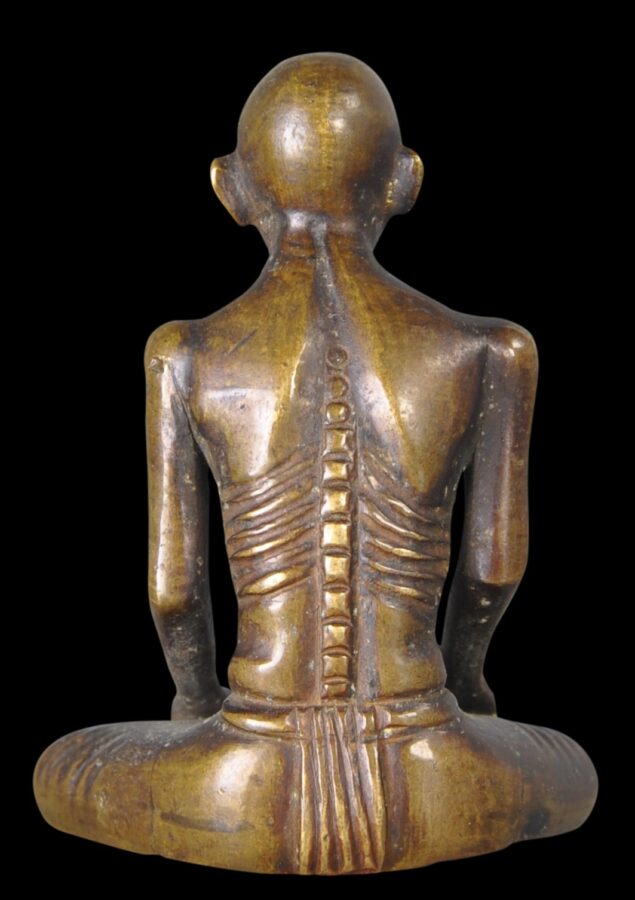This small bronze figure shows the Buddha in a particularly emaciated state, seated in a meditative pose with legs crossed and his hands resting on his shins. He wears a dhoti around his waist but otherwise is naked.
The ears are not particularly elongated which follows Chinese convention.
The rib cage, back and front, is particularly clear, as is the spine. His head is bald, and the forehead is deeply creased – the Buddha is suffering and perplexed.
Depictions of the Buddha in an emaciated state refer to when, in the pursuit of enlightenment, he sat beneath a bodhi tree for seven weeks without eating. When almost dead from hunger, a young girl offered him a bowl of rice and milk. At this point, Buddha realised that fasting and asceticism would not bring him enlightenment and so he abandoned such harsh practices. He came to view asceticism as an equally false path as that of the privilege and luxury that he formerly had enjoyed as a prince. He came to understand that thought and insight, rather than bodily deprivation, would lead to enlightenment. This is an important milestone for Buddha and Buddhism and it is one that images of the emaciated Buddha seek to represent.
The image here has a fine, dark patina and obvious signs of age.


